In Petri Dish We Sing
《於培養🧫內唱歌》
WebXR mini-tour + Moving-Image (4k 28:30) + A Step-in clinic installation
(Map art, Dioramas, Botanical Landscapes, Fictional Tools) + Zine
2025 ~ Drawings in Development
In Petri Dish We Sing
《於培養🧫內唱歌》
WebXR mini-tour + Moving-Image (4k 28:30) + A Step-in clinic installation
(Map art, Dioramas, Botanical Landscapes, Fictional Tools) + Zine
2025 ~ Drawings in Development
🧫................🧫................🧫................🧫................🧫................🧫................🧫................
🧫................🧫................🧫................🧫................🧫................🧫................🧫................
🧫 Through the lens of a stem cell clinic in the year 2135,
In Petri Dish We Sing envisions a world where embryonic stem cells (ESCs) become a raw,
sustainable material that forms the very fabric of the city’s infrastructure.
Inspired by MIT’s research on the Lemon Skin Chair and Yarli’s exploration of
the healthcare system and gender health gaps, the film envisions a society reconstructed
from this regenerative substance, one that carries the traces of cellular memory.
🧫................🧫................🧫................🧫................🧫................🧫................🧫................
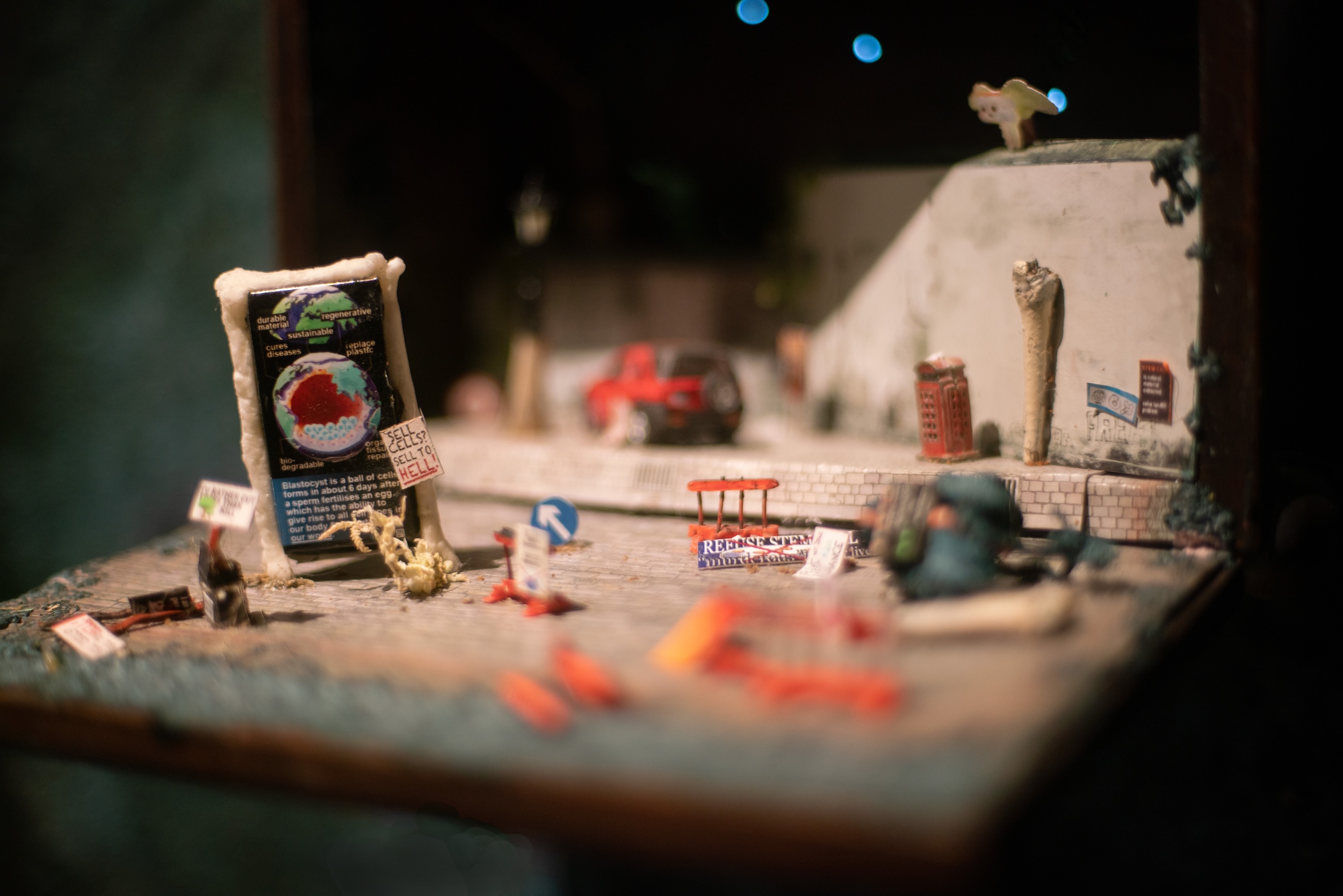 Tap to view
Tap to view
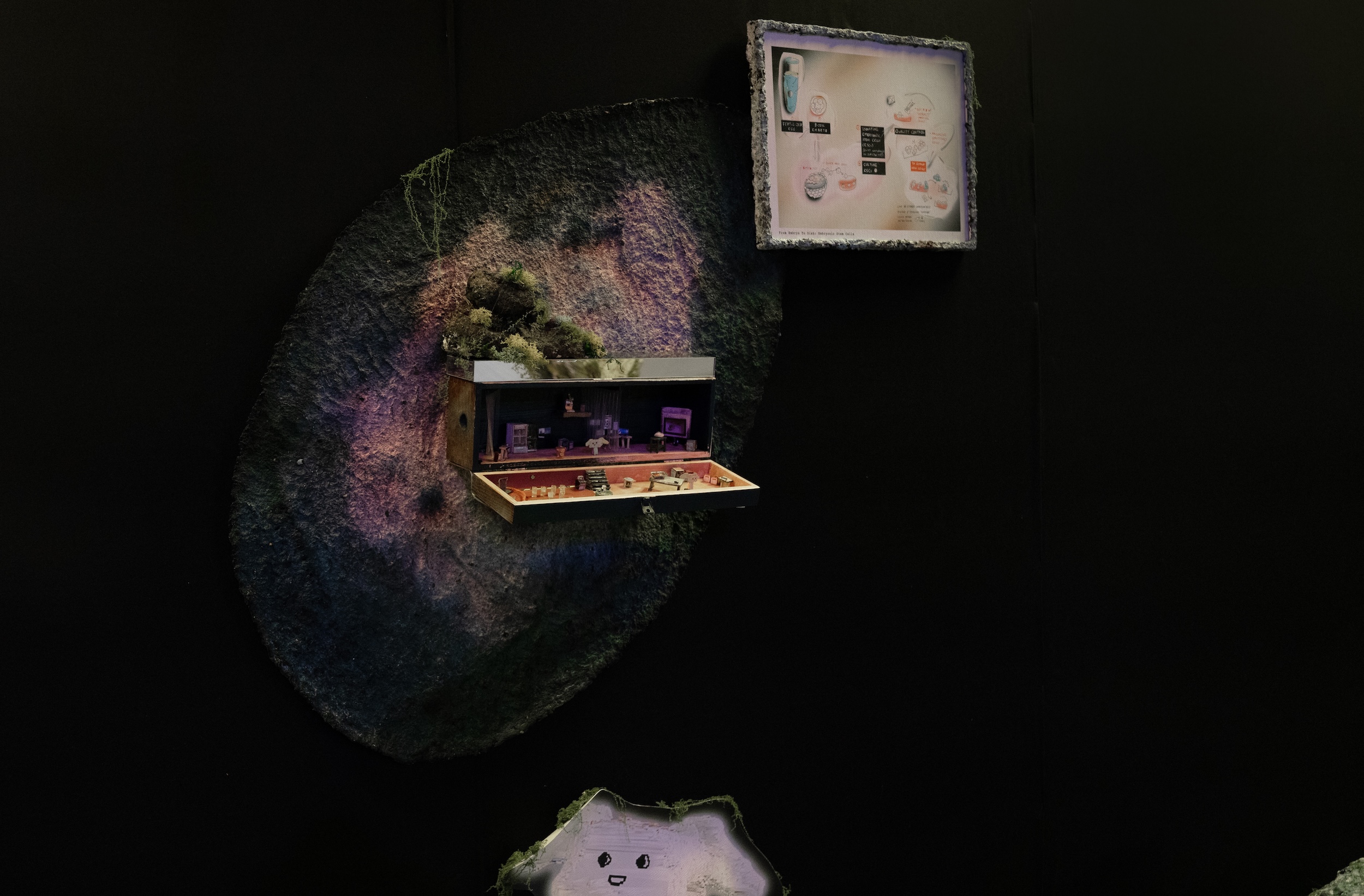 Tap to view
Tap to view

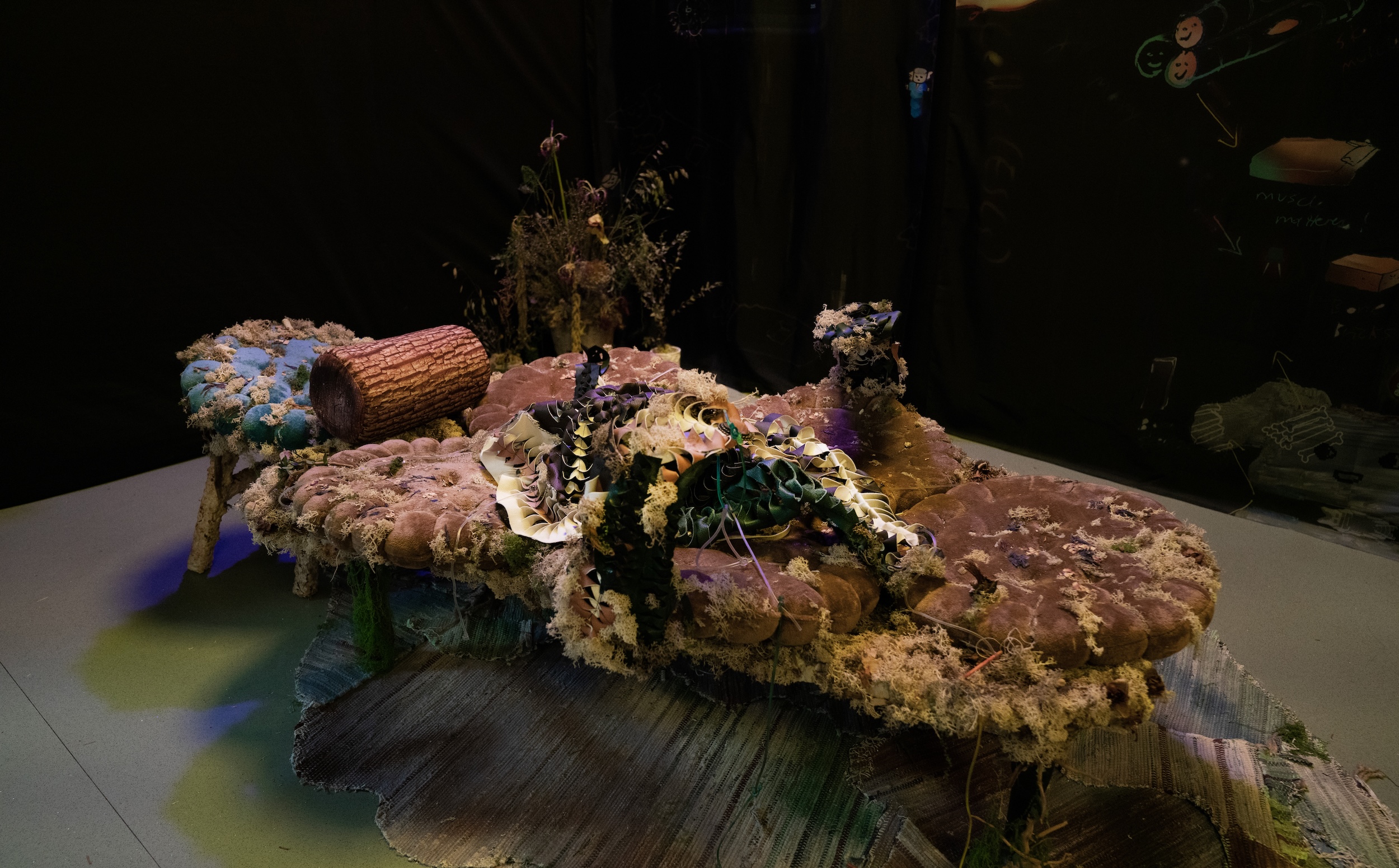 Tap to view
Tap to view
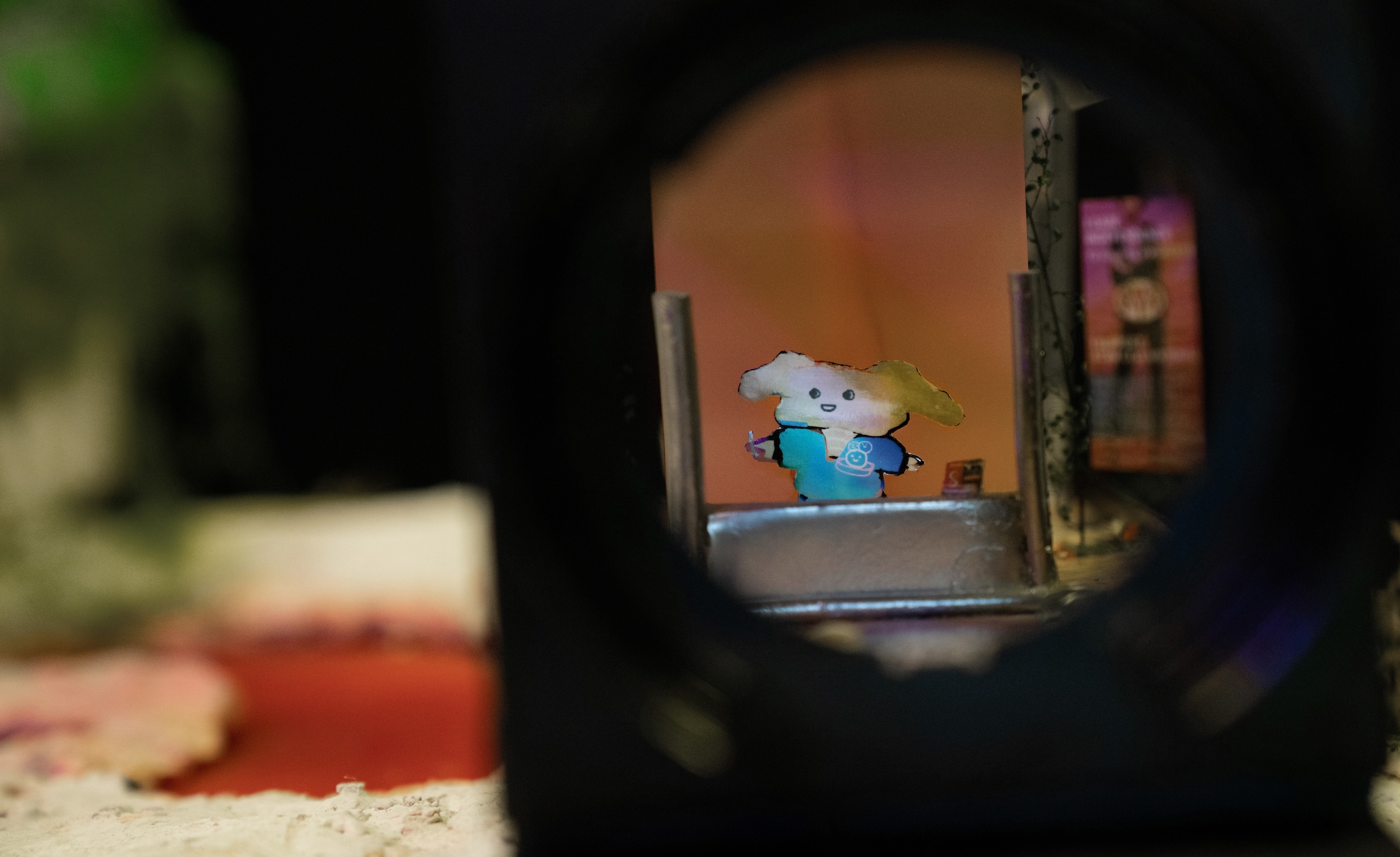
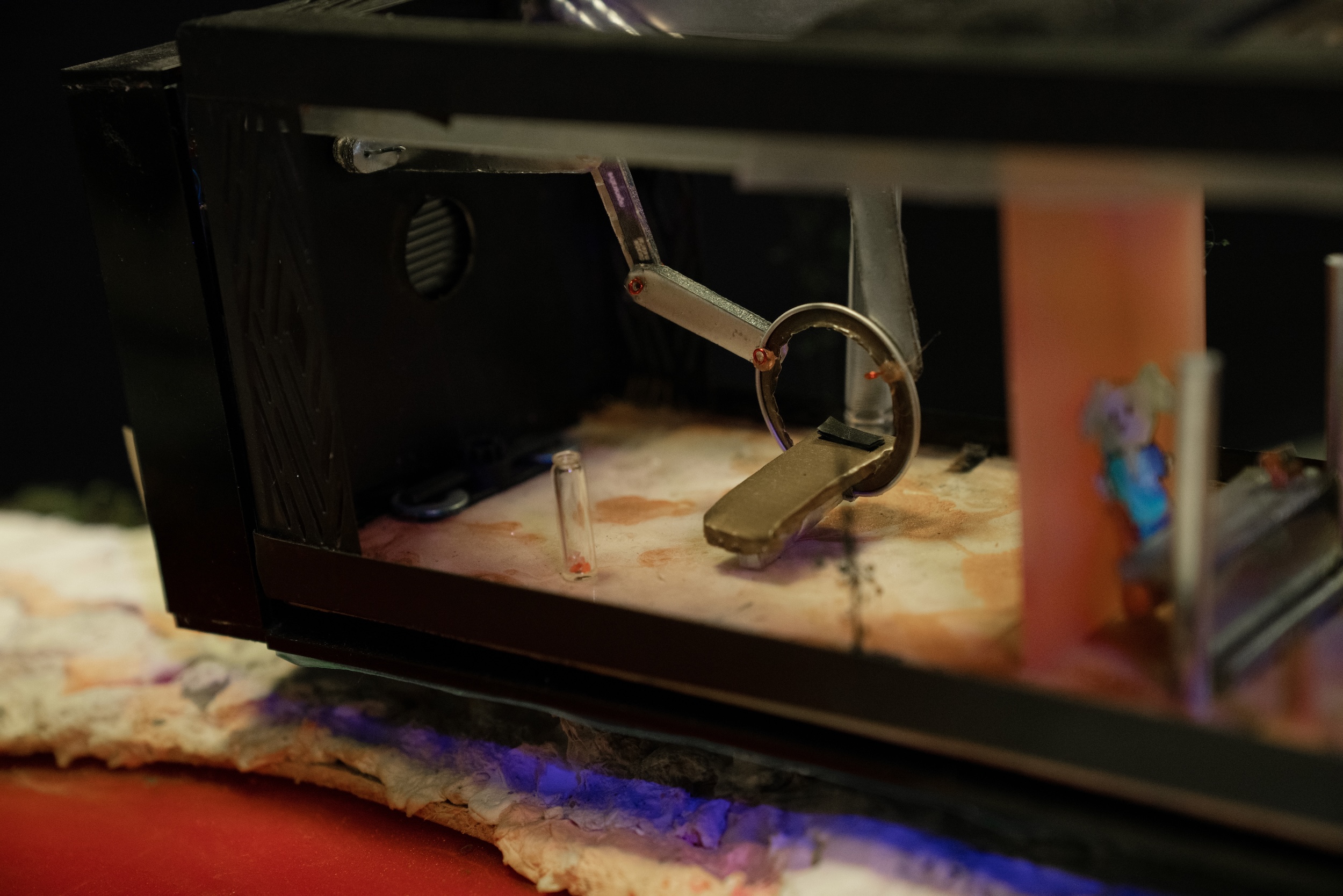
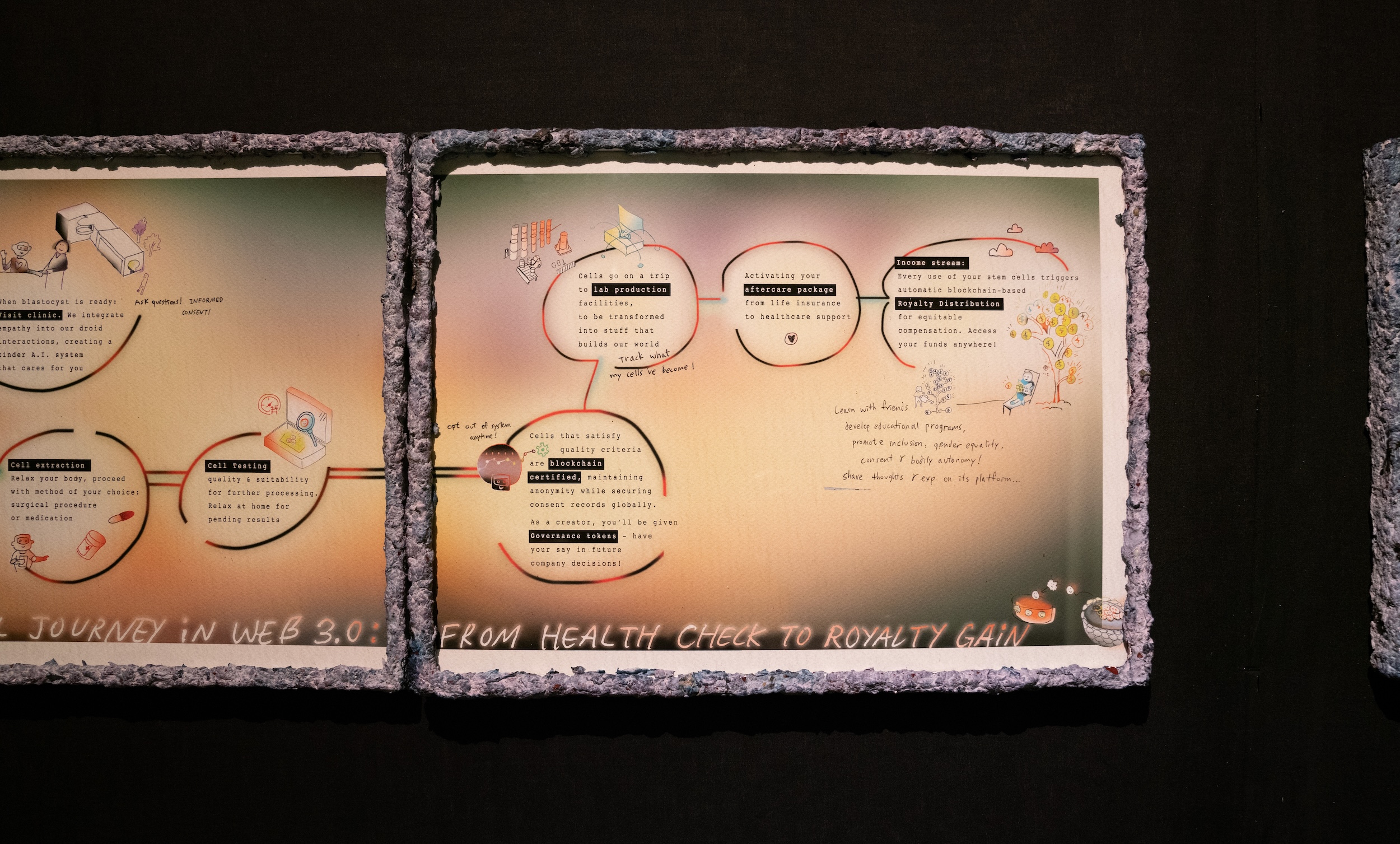
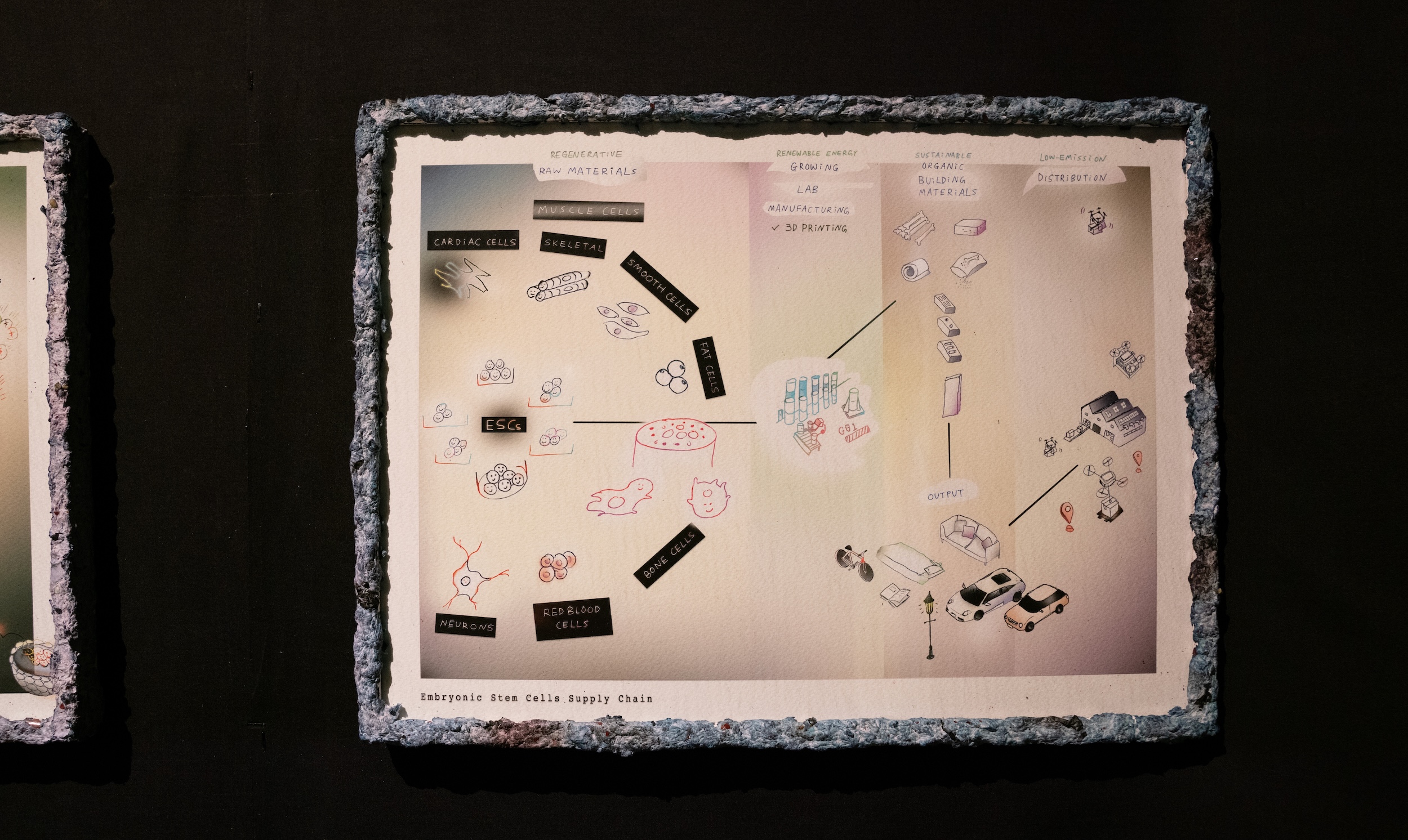
 Tap to view
Tap to view
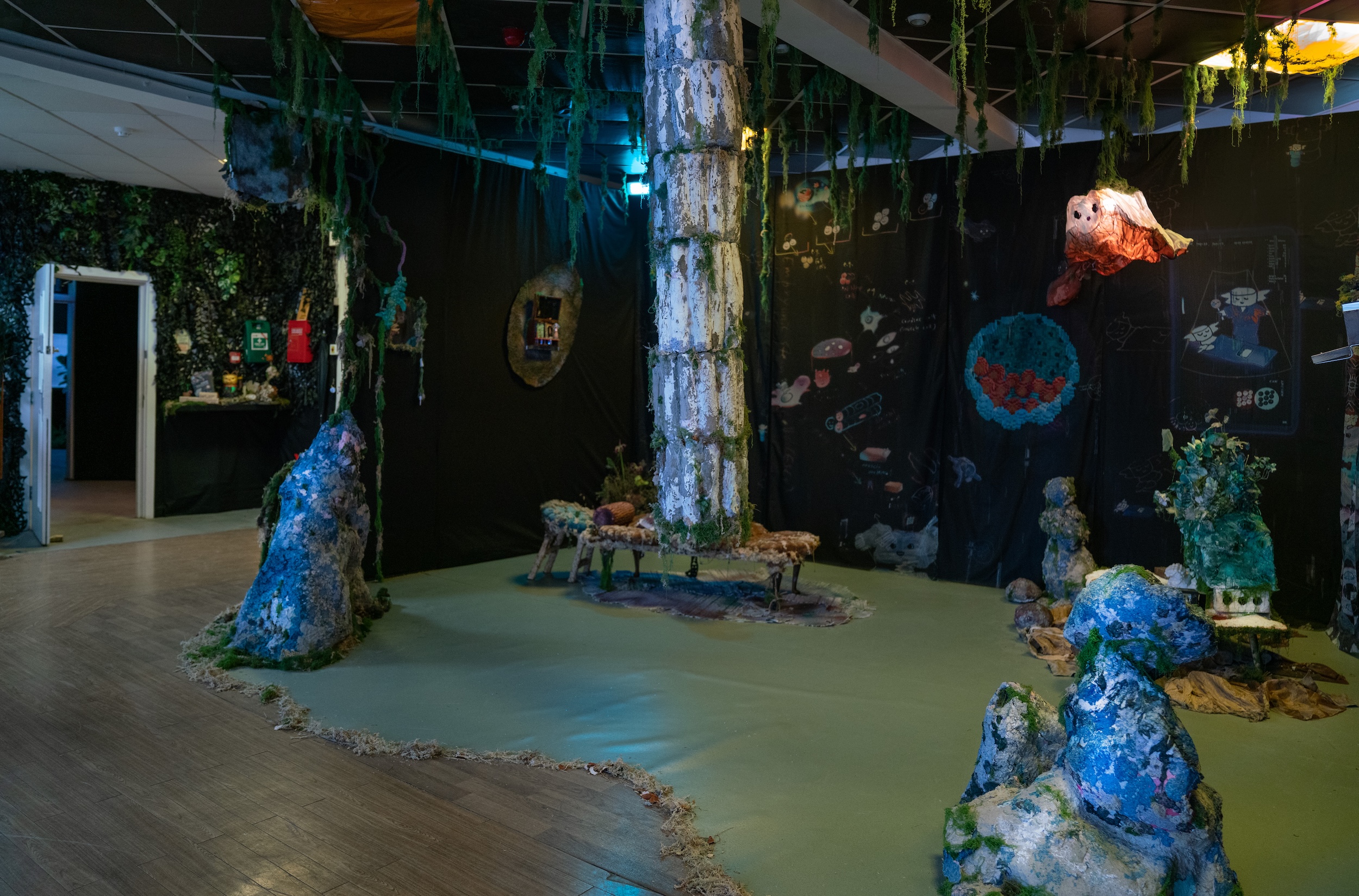 Tap to view full installation
Tap to view full installation
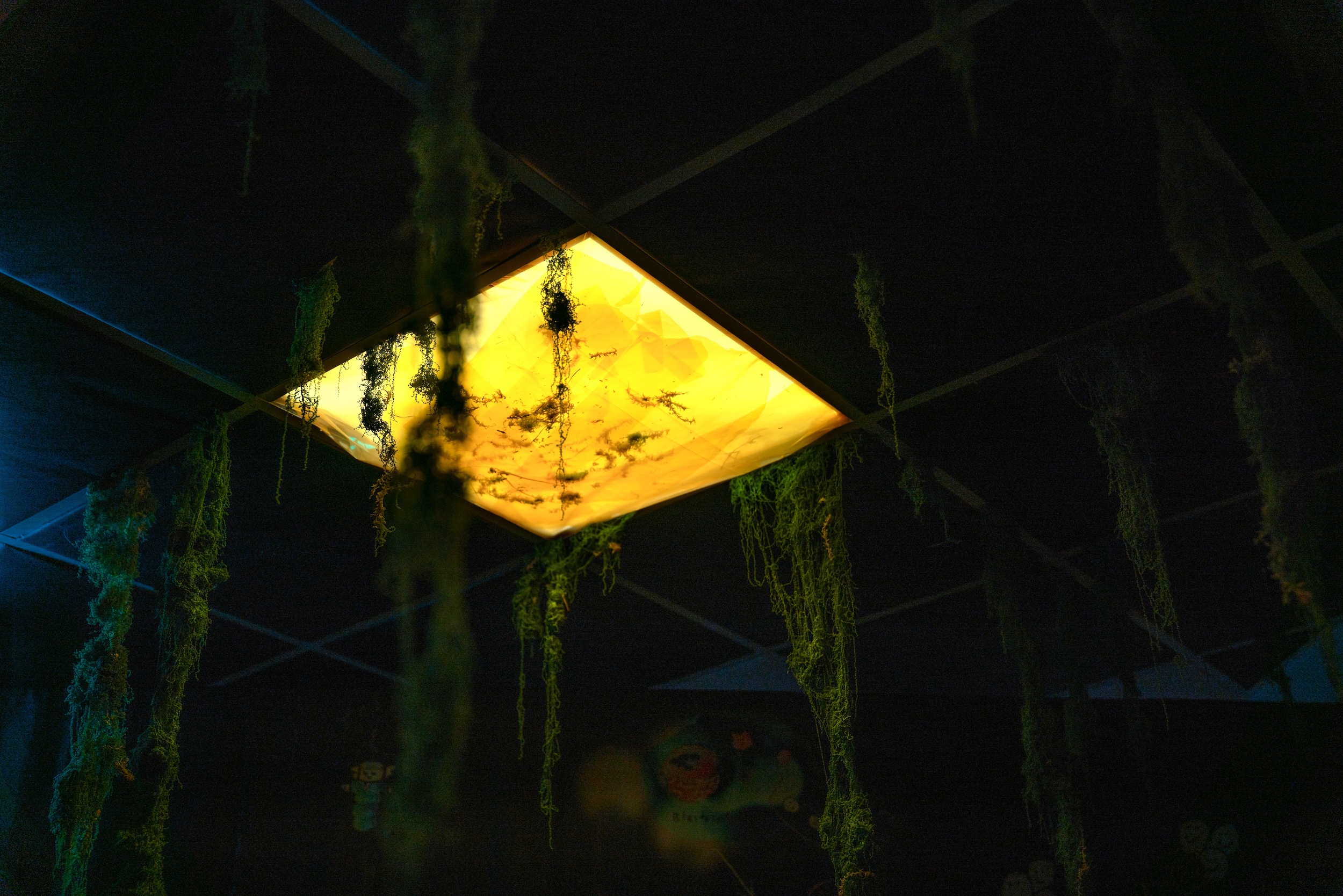
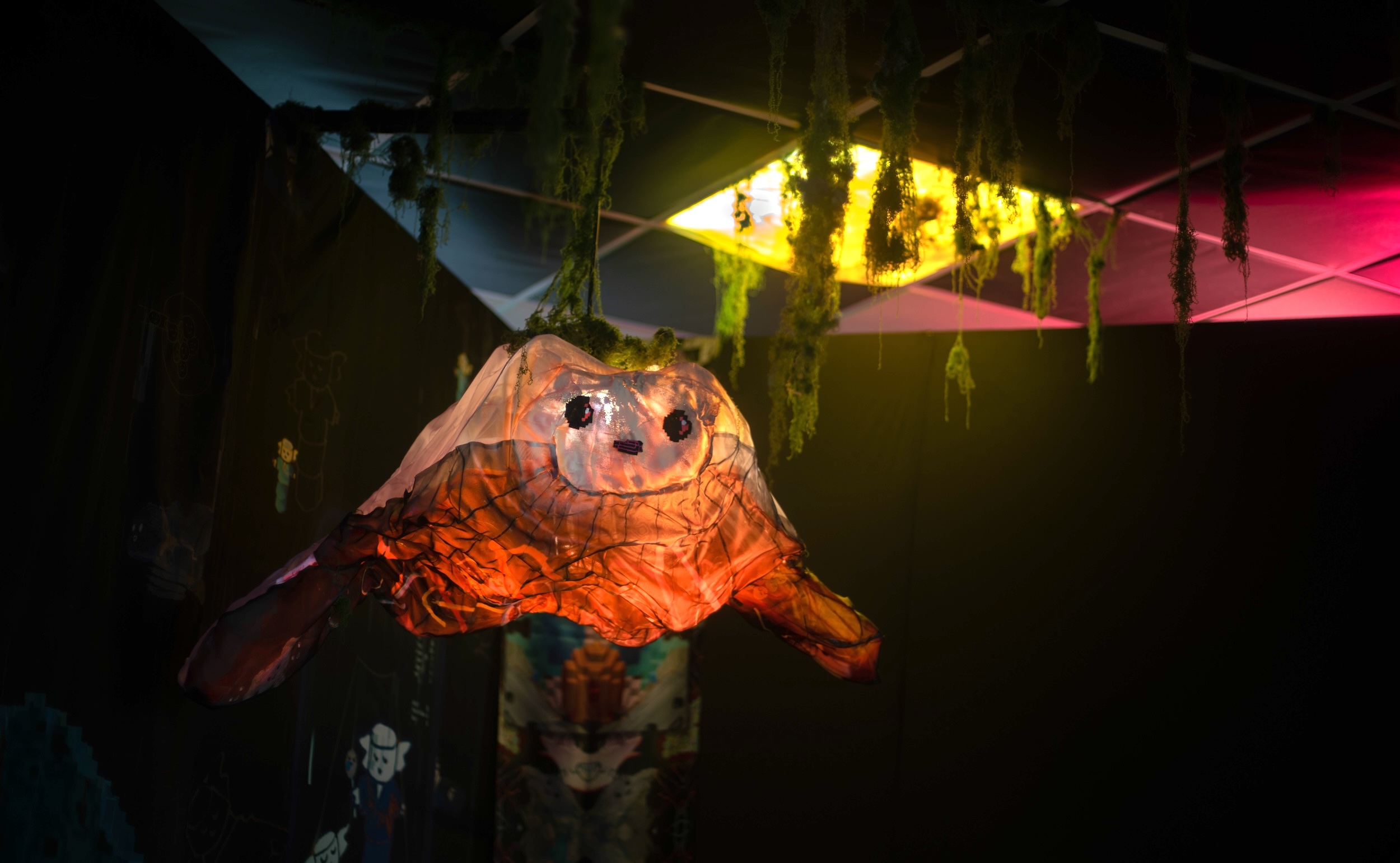
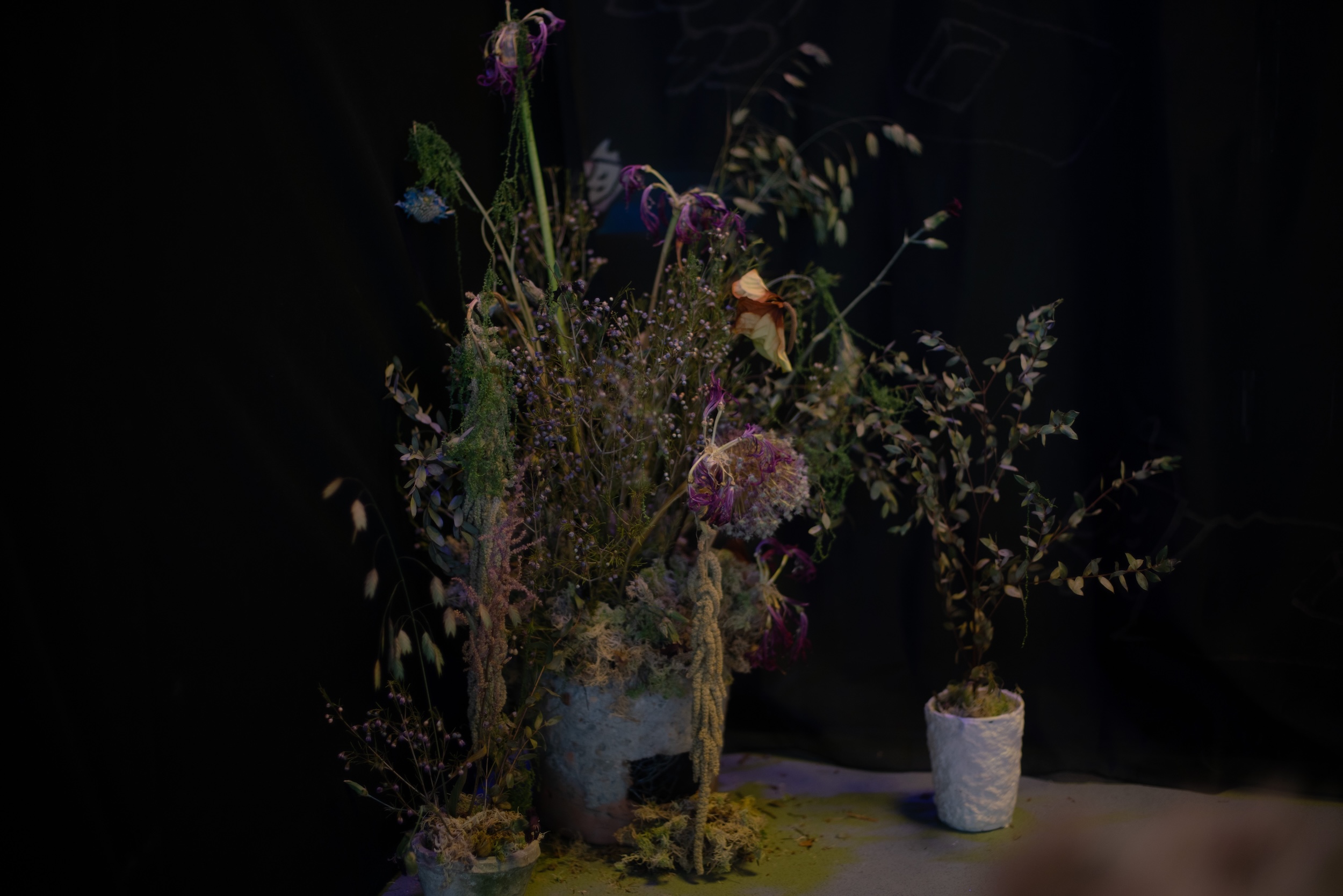

“What if women/uterus-carriers’ Embryonic stem cells (ESCs) are the solution to
climate change and gender inequality, that this ‘raw sustainable material’
becomes so desirable that it takes over the world as our primary material?”
In the world of Stem Cell City, ESCs are regulated and consented, to be used
as raw materials that replace plastic, brick and metal in the Web 3.0 era.
With new blooming industries in place, women/uterus carriers, historically
instrumentalised through reproduction, are now positioned as powerful
bio-entrepreneurs. They take charge of their bodies: walking into a clinic
to ‘fairtrade’ their cells as a way to gain economic autonomy and earning
royalties to sustain a stream of income from the materials their cells
produce: biodegradable bricks, furniture that heals, organs without waitlists.
This new system will release them from their traditional reproductive role,
and inspire people to remodel family systems since ESCs are technically possible
to be lab-programmed into eggs or sperm. Men and non-uterus-carriers navigate
new positions within this society.
However, what are the implications of building futures from such intimate matters?
What possibilities and responsibilities come with embedding cellular memory and
identity in physical form?
At the heart of In Petri Dishes We Sing are three intertwined lives: the healer,
inspired by Yarli’s uncle, who left his prestigious gynaecology career to return to
inherited ancient healing practices that Western medicine cannot identify; a granny who,
at 79 wishes to be pregnant again, made possible by stem cell technology; and a grieving
man who uses his late loved one’s stem cells to grow furniture. Their encounters unfold
within the speculative infrastructure of a stem cell clinic, where care and repair
could be reimagined.
Yarli develops this work in close collaboration with researchers and scientists in
stem cell biotechnology, regenerative medicine, genomics, bioethics, anthropology,
queer-feminism, healthcare, botanical design, and beyond to explore the work's
verisimilitude with real-world possibilities. It offers no binary resolutions,
but proposes instead a world alive with interdependence: fluid, regenerative,
and still being formed.
Compared to Induced pluripotent stem cells (iPSCs), generated from hair, for example,
ESCs can be argued to be more efficient as they require fewer steps, are more cost-effective from a business point of view, and are consensual.
The desire for ESCs grows as it builds our city. However, there are two sides to this coin: civic disagreement sparks when the government green-lit this seemingly utopian industry, facing classic ethics and moral questions on embryos - what makes human, human?
Moreover, in a city where we no longer need reproductive expectations from men, how would men/non-uterus-carriers feel, in a uterus-powered world, surrounded by a system that sides with people with uteruses, even their natural sperm is replaceable? Our current issue on the Gender health gap / Gender data gap might be in reverse.
As gender dynamics are in reverse, the cells industry that empowers women and queer folks might still lead to exploitation of body autonomy, privacy issues, and challenge patriarchal norms, which mirrors real-world problems in many ways. Are there any sustainable solutions? How could we build social resilience?
But what about healing damaged ecologies? In this world, ESCs are used as raw/natural materials that replace plastic, bricks, and metal. Imagine minimising metal mining exploitation in developing countries; how strongly lasting a bone-structured building and furniture would be, with regenerative repairing systems.
Being bio-degradable means it could reduce waste and be repurposed; save lives while we produce reparative organs “forever” that eliminate the waitlist for suitable donors (one stem cell could be split into more stem cells almost indefinitely with factors of ageing and storage).
These materials would heal, regenerate, and grow, or be repurposed by grinding into dust.
Seeing the pros of monetisation, the local government greenlit the entire operation, and worked on a regulation plan with businesses that support the ESCs system from its supply chain, management to production, including how to gather these raw materials to become materials that build our city.
While we dive into another layer, the technological advancement created a new underground market:
What if an obsessive fan can buy Taylor Swift’s hair without her consent, and grow the stem cells into a mattress?
Is that mattress a Taylor Swift? The underground market can also capitalise on bereavement by repurposing cells
from late loved ones to grow objects. In this case, how do you deal with identity and grief?
Little Extra... How can technology align with core feminist principles such as self-awareness,
inclusion, transparent power-sharing, kindness, and the common good?
Stem Cell Clinic says:
🌿 Inclusion!
Let's create a clinic environment and digital platforms that are accessible
to all, regardless of ability or background. Let's also promote diversity in decision-making processes
within the DAO, ensuring voices from different backgrounds and experiences are heard.
🌿 Your cell, your choice!
You, as a creator/donor, can withdraw anytime, immediately stop any future production with your cells.
How it works, explained by King’s College London’s Professor Michael Schillig:
* In a global clinic system, cells are certified & traced - blockchains are pseudo-anonymous,
but each transaction can be traced back to where it originated. Once a cell gets a number
assigned to it, for example, 89127, the public can see online what happened to it, like a chair,
a brick, and its royalty distributions. If someone wants to illegally see who is 89127 then they
have to physically go into a clinic (e.g. to get the document, etc)
As soon as cell 89127 is on chain, the clinic destroys the identifying information.
(But when something goes wrong, it can’t be fixed easily, it will be hard to grab royalty unless
proven identity, e.g. a key password match might solve the problem)
* If the clinics are a global, world-wide system, a smart contract-based system, it would make it
easier for people to extract stem cells in the UK, for example, then the cells could be sent
to produce something in Australia. As well as tracing royalty with the right person wherever they are.
This can protect users of the cell-based system, clients can’t be axed by a centralised decision.
The client, however, has the right to trace & withdraw their cells on chain from company decisions
that they disapprove of - let’s say a company wants to buy the cell to make weapons that the clients
disapprove of, the clients can withdraw their cells from this project.
🌿 Let's promote stem cell research that benefits society as a whole, not just a select few:
🌿 Share stories!
The clinic(s) provide platforms that resist oppressive norms by encouraging everyone to share their lived experiences, highlighting how technology and the value as a uterus-carrier (creator) intersect to empower individuals.
🌿 Learn together!
The clinics call out to communities and individual creators to develop educational programs that promote equality, consent, and bodily autonomy that help creators to navigate the ethical and social implications in our stem cell world.
🌿Be "feminist killjoys"!
By questioning and challenging traditional gender norms and power structures, and "complaining" constructively about inequalities and biases.
🌿Build kinder AI!
The clinic(s) integrate kindness and empathy into all digital interactions to provide emotional support and understanding to the creators.
🌿Inform your decisions!
The technology fosters self-awareness among the creator/donor community and stakeholders. The clinic(s) encourage creators to make informed choices about stem cell extraction and ensure that creators have full agency over their bodies. Implementing AI-driven tools will provide creators with insights into their health, choices, and the impact of their decisions.
🌿Transparent Power-Sharing!
The clinic(s) leverage blockchain and DAO principles to ensure transparent and decentralised power-sharing. Clients will be granted a % of tokens each time you work with us. As the token holder, the creators can view live governance proposals and cast their vote. It’s also bottom-up powered! Instead of going pyramid, go horizontal! The clinic(s) are public goods owned and governed by token holders!
Abolition is a process!